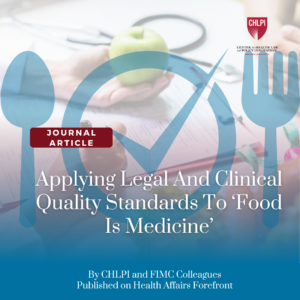Originally written by Cheryl Swanson for The Motley Fool.
Is your stomach ready for a big twist? Then you should know that the escalating battle over drug prices just got turned on its head.
For the past couple of years, states and insurers have successfully blocked patient access to many game-changing drugs because of their sky-high prices. While cancer-specific biotechs are not the only drugmakers affected, no class has taken a bigger hit than those providing next-generation treatment for hepatitis C at nosebleed prices.
Specifically, we’re talking about Gilead Sciences (NASDAQ:GILD), AbbVie Inc. (NYSE:ABBV), Merck & Co., Johnson & Johnson, and Bristol-Myers Squibb. These companies’ drugs eliminate the virus 90% of the time, but can cost anywhere between $54,600 to $94,500 for a course of treatment.
Hep-C is a life-threatening disease, so blocking access to these drugs could hurt many patients. The blocks are also stinging investors, many of whom thought these drugs would blast past analysts’ estimates for a long time to come. After all, even if you consider just the Medicaid portion of the hep-C market, sales were projected at $55 billion. Add in the rest of the market, both home and abroad, and how could a company like Gilead not be a huge winner for the foreseeable future?
Ouch! Who shrank the market?
Instead, the hep-C juggernaut ran into a huge roadblock — or, rather, a series of roadblocks. Even though Medicaid patients are prime candidates for the drugs, many states have refused to pay for them. Molina Healthcare (NYSE: MOH), for example, which administers Medicaid plans, found itself receiving no reimbursement for the expensive antivirals in 11 states . Not surprisingly, Molina reacted by providing coverage only when the disease was in its final stages, Stage 3 or 4, where the liver is “hard as a rock,” as Sanjeev Arora, a New Mexico physician, describes it. Arora further described treatment at that stage as “like closing the barn door after the horse has left.”
The erosion of the Medicaid market was devastating enough, but commercial insurers also jumped on the bandwagon. Back in 2014, UnitedHealth Group (NYSE:UNH) limited the antivirals to patients facing liver failure. Other insurers followed suit.
The upshot for investors is that market leader Gilead’s double-digit sales and profit growth came to a screeching halt last quarter, with its hep-C drug Harvoni badly missing expectations. AbbVie’s chief competing hep-C drug, Viekira, also came up well short of consensus estimates.
In fact, many analysts are now projecting that the hep-C market won’t just flatten; it’s headed for a cliff.
Don’t bet on it: Floodgates are reopening
So much for analysts’ projections. The hep-C world is about to change, again. Massachusetts is the latest state to reverse its policy. A few weeks ago, after losing multiple legal battles, the state threw in the towel and conceded that any Medicaid patient with hep-C qualifies for the antiviral drugs.
Massachusetts is just one state, but similar actions have occurred in Florida, New York, Washington, and Delaware in the past few months. Pressured by an almost endless list of advocacy groups, insurers are also breaking down. Anthem’s (NYSE:ANTM) Blue Cross and Blue Shield plans in 14 states quietly reversed course and began authorizing treatment to people “in all stages of fibrosis” (liver scarring) last December. UnitedHealth did an about-face on Jan. 1. The nation’s largest insurer now provides greatly expanded coverage for these drugs.
And not just states and insurers are reopening the floodgates. In March, the Department of Veterans Affairs said it will treat any veteran with hep-C with the new drugs, regardless of the stage of illness — extending therapy to nearly 130,000 veterans.
Even more stunning, Medicare followed their lead. In the face of a challenge by an Arizona man named Walter Blanco, who was twice denied access, the agency recently enacted a similar policy.
Hep-C investors are still in for volatility
But while easier access to therapy is great news for all hep-C drugmakers, don’t expect an immediate big bump in revenue for any of them.
For one thing, states will demand deep pricing discounts. Gilead has already been forced to discount its average hep-C drug by almost 46%, and state-negotiated discounts are likely to be greater. They could bring pricing down to $30,000 or less, according to Kevin Costello, from Harvard’s Center for Health Law & Policy Innovation.
Second, as many as 50% of hep-C patients aren’t even aware they have the disease.
Third, one company still almost completely dominates this market, with AbbVie a distant second. Gilead owns 90% of the market, and the recently approved Epclusa, which can treat all six genotypes of hep-C, should keep it the front-runner.
Best investing bets? Biotechs providing drugs that are “medical necessities”
Beyond hep-C, the recent events have implications for all biotech and specialty pharma investors. With healthcare costs soaring, pharmas developing me-too drugs that offer marginal benefits are in trouble. Something’s gotta give, and these drugs are likely to be destined for payers’ chopping blocks.
A better bet are companies providing drugs that are medical necessities. Restrictive policies against those drugs probably won’t survive the legal challenges, according to Nicholas Bagley, a professor of law at the University of Michigan. “I think the writing is on the wall, and plaintiffs are likely to prevail in these lawsuits,” he said.
In other words, despite their extreme prices, companies with drugs that save lives should find the wind at their backs again soon. And if you’re looking for one good pick based on this trend, there’s really no choice. Market leader Gilead is now trading at a stupid cheap forward earnings multiple of 6.95.
Here’s the bottom line: Tens of thousands of people with hep C are about to gain access to treatments that can cure them. I’d say that’s good news for everyone. And it doesn’t hurt that this twist in the wind may eventually add a lot of lift to some well-chosen portfolios.


Health Law & Policy, Commentary
The Path Forward: What Patient Advocates Should Know About Health Policy in 2025-2026
November 25, 2024